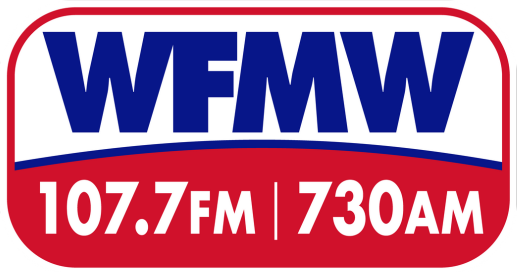
The old saying goes: “Find a penny and pick it up, and all the day you’ll have good luck.”
But as it turns out, those pennies might soon be just what some businesses need heading into the holiday season.
Independence Bank — along with several other regional financial institutions — is reminding customers that the U.S. Department of the Treasury’s discontinuation of the penny will take full effect in 2026.
Officials note that the Federal Reserve can only distribute what remains in its current supply. While pennies will remain legal tender, many organizations won’t be able to obtain more copper coins once existing reserves are depleted.
The bank is encouraging businesses to review pricing and payment models early to ensure smooth transactions and consistent change delivery once the coin is no longer available.
Late last week, the Associated Press confirmed that the United States is, indeed, running out of pennies — following President Donald Trump’s decision to halt their production.
Although some see pennies as outdated, the shift to rounding transactions up or down could significantly affect markets, particularly convenience stores and gas stations. Jeff Lenard of the National Association of Convenience Stores told the AP that his organization has supported eliminating the penny for decades, but that this sudden change is “not the way” they wanted it to happen.
Earlier this year, Trump detailed that both the penny and the nickel cost more than their face value to produce — about 3.7 cents per penny and 13.8 cents per nickel in 2024, factoring in machinery, labor, materials, and distribution.
The last copper-zinc planchets were ordered in May, and the final mints went out in August. More than 3.2 billion pennies were issued in 2024, creating over $32 million in coinage — but costing $118.4 million to make. The penny was the second-most-minted U.S. coin last year, behind the quarter, yet one of the least recirculated — a cycle of unsustainable production.
The AP also reported that the U.S. government expects to save at least $56 million annually by ending penny production.
Meanwhile, a bill pending in Congress — the Common Cents Act — would formally end penny minting, require cash transactions to be rounded to the nearest five cents, and establish related rules for federal currency policy.
The U.S. Copper Penny: A Timeline
1793 – The Beginning
First U.S. one-cent coin issued by the newly established U.S. Mint in Philadelphia.
Known as the Flowing Hair Chain Cent, featuring Lady Liberty with flowing hair and a chain on the reverse symbolizing unity.
Composition: 100% copper; weighed 13.48 grams, roughly the size of a modern half dollar.
1793–1857 – Large Cents
1793–1796: Flowing Hair and Liberty Cap cents
1796–1807: Draped Bust
1808–1814: Classic Head
1816–1839: Coronet (Matron Head)
1839–1857: Braided Hair
Still pure copper, but the coin was large and bulky, unpopular with the public.
1856–1858 – The Flying Eagle Cent
A smaller-sized cent introduced to replace the large cent.
Composition: 88% copper, 12% nickel — giving it a pale “white cent” color.
Officially minted for circulation in 1857–1858.
1859–1909 – The Indian Head Cent
Replaced the Flying Eagle design.
1859: simple wreath reverse.
1860–1909: shield-and-wreath reverse.
Composition:
1859–1864: 88% copper, 12% nickel (“white cent”).
1864–1909: 95% copper, 5% tin and zinc — a redder tone and softer metal.
1909 – The Lincoln Cent Debuts
Issued to commemorate Abraham Lincoln’s 100th birthday — first U.S. coin with a real person’s portrait.
Designed by Victor David Brenner.
Reverse: Wheat ears (the “Wheat Penny”).
Composition: 95% copper, 5% tin and zinc.
1943 – The Steel Cent
During World War II, copper was needed for ammunition.
Pennies struck in zinc-coated steel, giving a silver appearance.
1943 steel cents often confused with dimes; they rusted easily, so the copper composition returned the next year.
1944–1982 – Return to Copper
Pennies again 95% copper, 5% zinc (tin phased out after 1962).
The Wheat reverse continued until 1958.
1959: new Lincoln Memorial reverse for Lincoln’s 150th birthday.
1982 – Copper to Zinc Transition
Rising copper prices meant the metal was worth more than the coin itself.
The Mint switched to 97.5% zinc, 2.5% copper plating mid-year.
Both copper and zinc cents exist dated 1982.
2009 – Lincoln Bicentennial Designs
Four reverse designs marked Lincoln’s 200th birthday and the centennial of the Lincoln cent:
Birth and early childhood (Kentucky cabin)
Formative years (Indiana rail-splitting)
Professional life (Illinois statehouse)
Presidency (U.S. Capitol under construction)
2010–Present – The Union Shield Reverse
Reverse shows a Union shield with a single horizontal banner reading E Pluribus Unum.
Composition remains copper-plated zinc (97.5% zinc).
Weight: 2.5 grams.
🏆 Most Valuable U.S. Pennies
1. 1943 Copper Cent (“Bronze Lincoln Cent”)
Why it’s valuable: In 1943, pennies were supposed to be made of steel for WWII. A few leftover bronze planchets (from 1942) were struck by mistake.
Known examples: About 20 across all mints.
Value: Average circulated: $100,000–$250,000, Top uncirculated examples: $1,000,000+
Tip: Use a magnet — real 1943 bronze cents are non-magnetic, while the steel ones stick.
2. 1944 Steel Cent
Why it’s valuable: The reverse error of the 1943 situation — some leftover steel planchets were accidentally struck in 1944 when copper returned.
Known examples: 20–30 total, mostly from Philadelphia and Denver.
Value: Circulated: $50,000–$125,000, Mint State: $250,000–$400,000
3. 1909-S VDB Lincoln Cent
Why it’s valuable: First year of the Lincoln design by Victor David Brenner. The initials “V.D.B.” on the reverse were removed after just a few days.
Mintmark: “S” (San Francisco) + “V.D.B.” on reverse bottom.
Mintage: Only 484,000.
Value: Fine condition: $800–$1,200, Uncirculated: $2,000–$3,000+, Red Mint State: $5,000–$10,000+
4. 1914-D Lincoln Cent
Why it’s valuable: Very low mintage (just 1.1 million) and heavily circulated during WWI. Few high-grade survivors.
Value: Fine: $250–$400, Uncirculated: $2,000–$4,000+
5. 1922 No D (Weak D) Lincoln Cent
Why it’s valuable: All 1922 cents were struck in Denver, but one die pair lost its “D” mintmark due to over-polishing.
Value: Fine: $500–$800, Mint State: $10,000–$20,000+
6. 1955 Doubled Die Obverse
Why it’s valuable: One of the most famous error coins in U.S. history. The entire date and motto (“LIBERTY,” “IN GOD WE TRUST”) appear doubled.
Value: Circulated: $1,000–$2,500, Uncirculated: $10,000–$25,000+
7. 1969-S Doubled Die Obverse
Why it’s valuable: Extremely dramatic doubling of the date and lettering; authenticated examples are rare.
Value: Circulated: $25,000–$50,000, Uncirculated: $75,000–$150,000+
8. 1972 Doubled Die Obverse
Why it’s valuable: A clearer doubling than most minor “doubled dies.” Widely collected.
Value: Circulated: $200–$500, Uncirculated: $1,000–$2,500
9. 1992 Close AM / 1999 Wide AM Lincoln Cents
Why it’s valuable: Reverse design mix-up between proof and circulation dies — spacing between “A” and “M” in “AMERICA” reveals the error.
Value: 1992 Close AM: $5,000–$25,000, 1999 Wide AM: $400–$5,000
10. 1877 Indian Head Cent
Why it’s valuable: Lowest mintage of the Indian Head series (852,500), and most were heavily circulated.
Value: Fine: $900–$1,200, Mint State: $3,000–$7,000+
11. 1856 Flying Eagle Cent
Why it’s valuable: Technically a pattern coin, not regular issue — struck to test the new small-cent design before official 1857 release.
Mintage: About 1,500–2,000 known.
Value: Circulated: $10,000–$15,000, Uncirculated: $25,000–$50,000+





